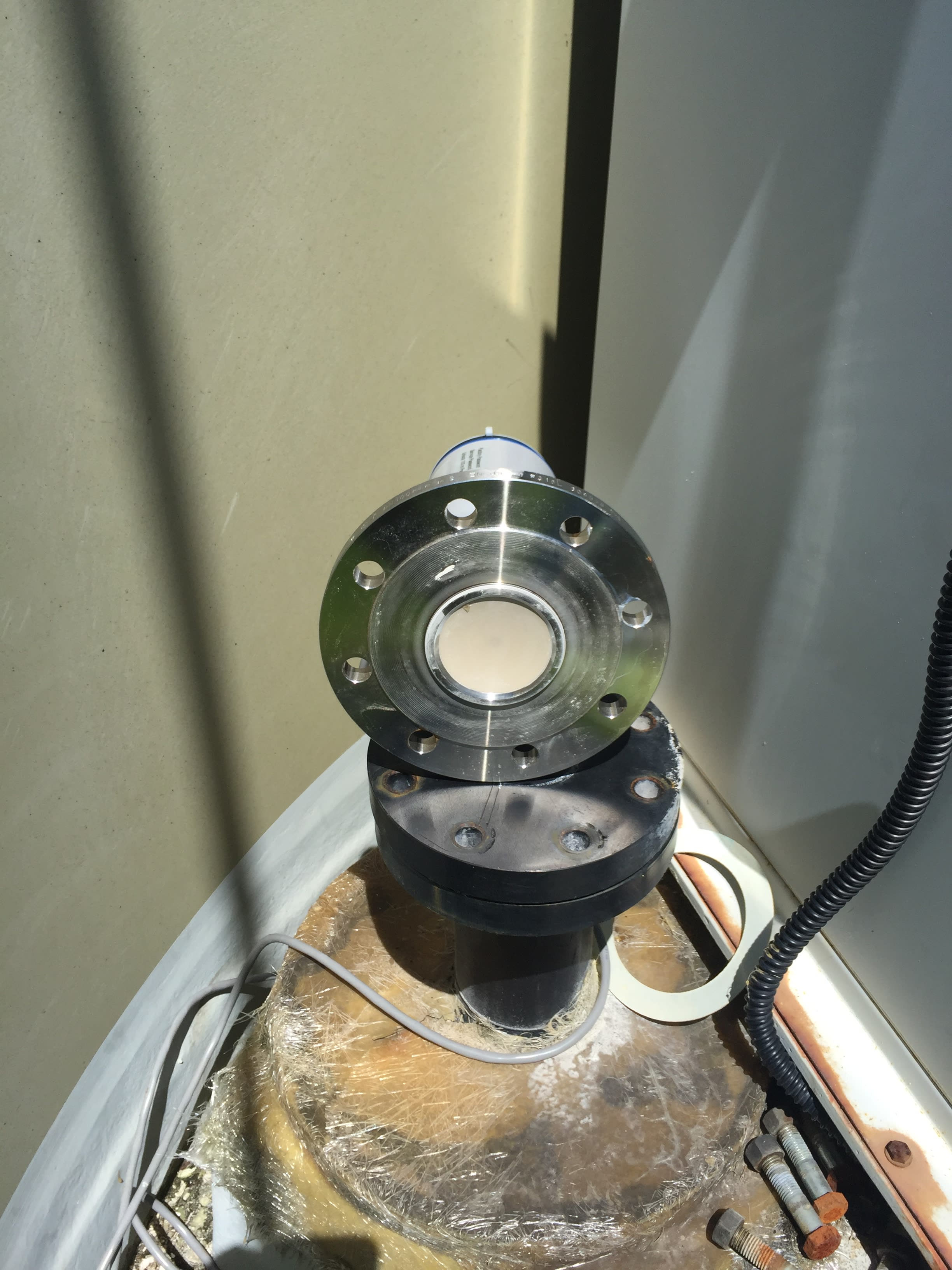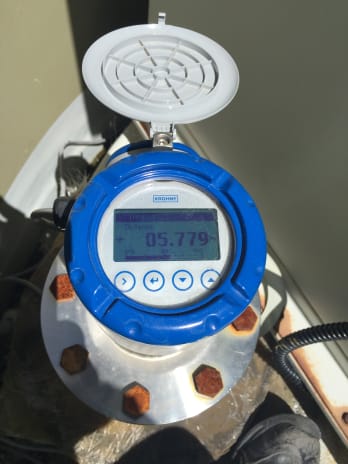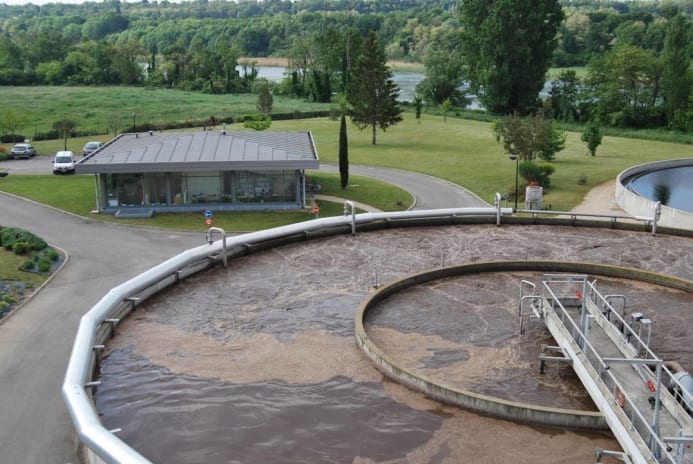Level measurement of lime in a wastewater treatment plant
Application Note | Water & Wastewater
- Automated stock management of fine powders in a high and narrow silo
- 80 GHz radar (FMCW) for accurate, continuous monitoring of lime consumption
- Optimized supply inventory

Background
An industrial wastewater treatment plant in France uses lime to adjust pH and alkalinity in coagulation, flocculation and biological treatment processes. The lime is stored in a conical, tall and narrow silo with a height of 12 m / 39.37 ft and a diameter of 3 m / 9.84 ft.
Measurement requirements
The silo level must be continuously monitored in order to ensure the uninterrupted supply of lime for the different treatment processes. Former measuring devices were struggling with the uneven product surface, dust and build-up of this low-reflective medium (εr value: 1.6). Hence, the customer was looking for a more reliable measurement solution and was looking to automate his stock management at the same time.
KROHNE Solution
KROHNE proposed the OPTIWAVE 6500 C. The 80 GHz Radar (FMCW) level transmitter for powders and dusty atmosphere was installed with DN 100 flange and a flush-mounted DN 70 / 2.75" PEEK Lens antenna. Fitted on top of the fibreglass nozzle (230 mm / 9" high) of the silo, it continuously measures the level of lime and transmits the values to the DCS in a control room. Thanks to the small beam angle of the Lens antenna, this powerful device handles the high and narrow silo even in the presence of internal obstructions.
Customer benefits
The customer benefits from an optimized supply inventory of the plant. The OPTIWAVE 6500 provides accurate continuous level measurement of lime regardless of the dusty atmosphere, uneven product surface or low dielectric constant. The specific algorithms and high signal dynamics of the 80 GHz device are key to providing reliable readings despite these challenging conditions. As an additional benefit, the level transmitter enables trouble-free installation, commissioning and operation, all of which results in a fast return on investment altogether. The Lens antenna is flush-mounted, meaning there is no intrusion into the tank. This way, the radar device considerably reduces the risk of build-up and keeps maintenance costs to a minimum.






